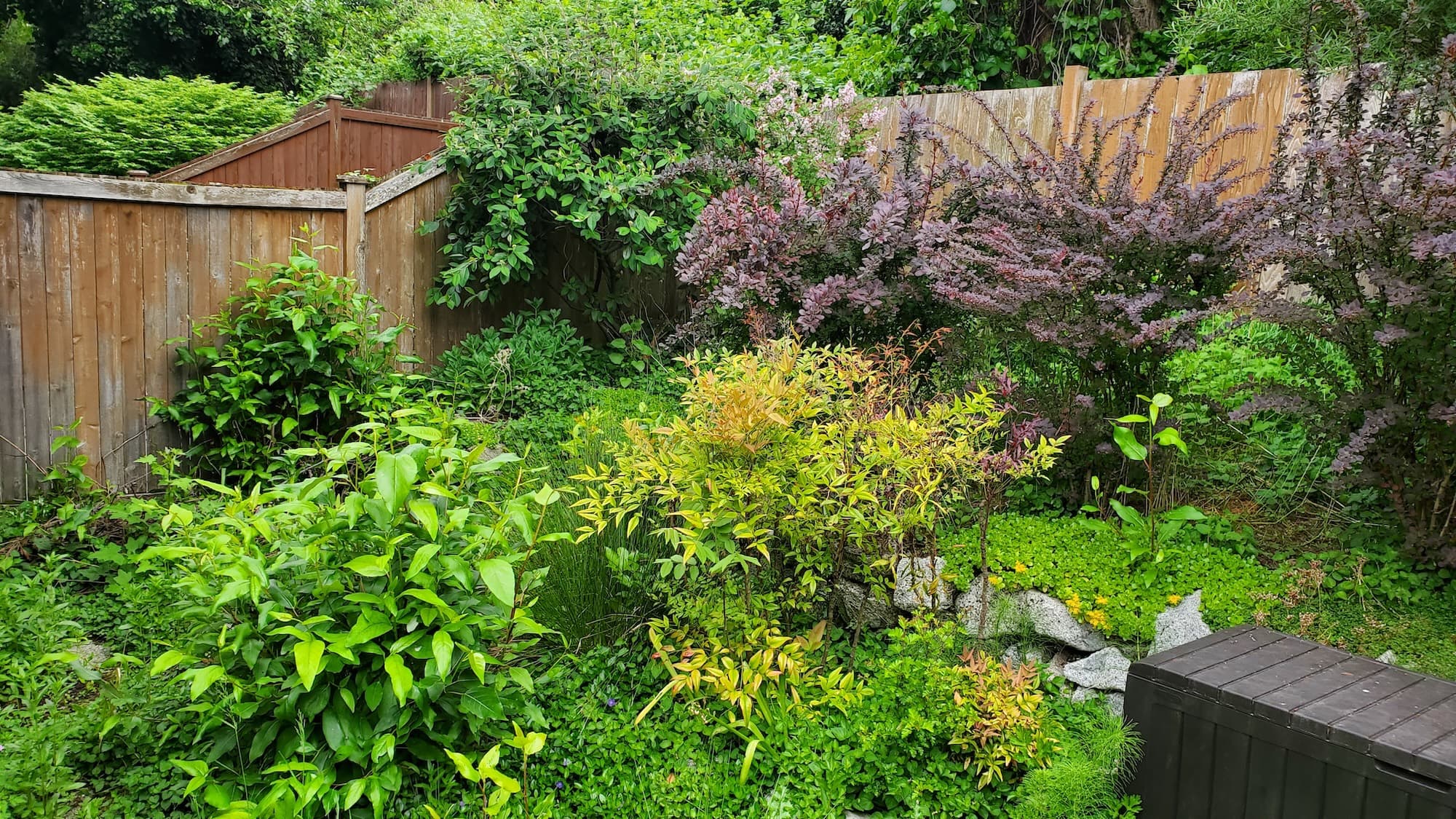Burien Pollinator Habitat Restoration
Homeowner’s Issue
Burien yards face a mix of heavy winter rain, compacted glacial soils, and variable sun exposure — from full sun on south-facing slopes to deep shade under mature maples. These conditions encourage moss, invasive ivy, and patchy drainage, while reducing the success of non-native ornamentals. Landlords and homeowners often want attractive, low-maintenance landscapes that survive wet winters and summer dry spells without relying on chemical controls.
A good pollinator habitat adapts to these realities: it improves soil structure with organic matter, uses drought-tolerant native plants where slopes and sun permit, and places shade-tolerant species under canopy. The result is a resilient, wildlife-friendly yard that lowers irrigation and upkeep over time. For properties near Seahurst Park or bordering White Center, thoughtful plant choices also help support local biodiversity corridors and reduce unwanted run-off to nearby green spaces.
Our Quality Service
We assess slope, drainage, and sun patterns, then design plantings that match local microclimates using native perennials and shrubs. Installation focuses on soil-building, mulching, and no-herbicide, organic methods to prevent weed pressure and support pollinators.
Benefits include improved safety around wet slopes, stronger curb appeal, lower long-term maintenance, and long-lasting plant communities that thrive in Burien’s climate.
What’s Included
- Site assessment and soil evaluation
- Custom planting plan with native species
- Soil amendments with organic compost
- Plant installation and staking as needed
- Mulching and initial maintenance visits
Optional upgrades:
- Mulch + landscape fabric for pathways
- Organic weed control and hand-weeding programs
- Pollinator houses (bee hotels, butterfly shelters)
- Haul-away (dump fees applied) or green bin disposal
Before & After / Expectations
After installation expect an establishment year of regular watering and monthly checks. Year two onward requires seasonal cleanups, selective pruning, and spot weeding to prevent ivy regrowth. For mossy or compacted spots, we recommend light aeration, organic amendments, and shade-appropriate groundcovers.
Water deeply but infrequently, monitor for invasive ivy, and top up mulch each fall to retain moisture and suppress weeds.
FAQs
How long does installation take?
Most small yards are completed in 1–3 days; larger projects are scheduled with a clear timeline.Do you use herbicides?
No — we use organic, mechanical, and cultural methods only.What maintenance is needed after planting?
Regular watering the first season, seasonal pruning, and annual mulch refreshes keep habitats healthy.Can this work for rental properties?
Yes — we design low-maintenance plans that reduce tenant turnover and keep curb appeal steady.
Call to Action
Burien homeowners and landlords: book a free estimate and secure fast scheduling with a local crew that understands slopes, rain, and soil here. For a dependable, sustainable pollinator habitat that lasts, email neatandtidyseattle@gmail.com or call 206-538-9344. We offer clear quotes, upfront scheduling, and local expertise to get your yard working for nature and you.










